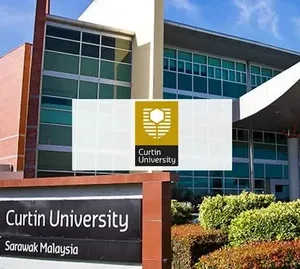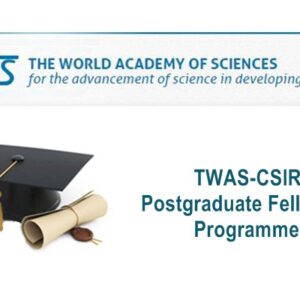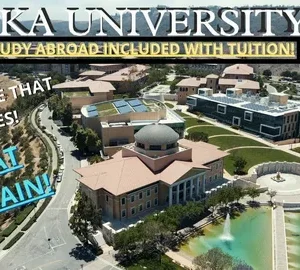Introduction
Planning securing a Green Card? If you’re studying in the U.S. on an F‑1 visa and dreaming/Hoping of making the U.S. your permanent residence, you’re not alone. Your path isn’t direct, but it’s absolutely possible, with planning, perseverance, and the right strategy. In this guide, we’ll explore 10 realistic/possible ways international students can transition to a U.S. green card in 2025.
Understanding Visa Basics
First, the F‑1 visa: it lets you study in the U.S., but it’s not an immigrant visa—meaning the intent is temporary. To stay long-term, you’ll need to adjust status, typically after graduation. Knowing that distinction saves a lot of headaches later.
1 – Employment-Based Green Cards
Three common EB categories apply:
-
EB‑1: For those with extraordinary achievements in science, arts, education, business or athletics—no employer needed if you can self-petition. Immigration Advice Service+3Chudnovsky Law+3Wikipedia+3Wikipedia+6Wikipedia+6sisulegal.com+6warrenlawfirm.netReddit+1
-
EB‑2: Advanced degree holders or exceptional ability professionals can also apply—sometimes with a National Interest Waiver (NIW).
-
EB‑3: Opens doors for skilled workers and professionals via employer sponsorship.
If you’re studying a master’s or PhD, EB‑2 or EB‑1 are realistic targets—especially if your work stands out.
2 – OPT and H‑1B: Your Ladder to Residency
After finishing your degree, you might qualify for Optional Practical Training (OPT)—a 12-month window to work in your field. Hold a STEM degree? Chance for a 24-month extension. Wikipedia
If your employer files an H‑1B visa, you can switch status and eventually pursue an EB‑2/EB‑3 green card. It takes time, but it’s a well-trodden path.
3 – EB‑5 Investor Visa
For students with financial means, EB‑5 remains an option: invest $800K to $1.8M in U.S. businesses that create jobs, and get permanent residency faster. Interest has surged among Indian students due to student visa hassles. Indiatimes+2The Times of India+2
4 – Family-Based Sponsorship
If you marry a U.S. citizen or green card holder, you can get sponsored as an immediate relative (fast-track) or through family preference categories (slower). Not everyone’s cup of tea, but it’s a valid route.
5 – Diversity Visa (Green Card Lottery)
Yes, international students can enter the Diversity Visa lottery (DV), though odds are slim. Explore your country’s eligibility and your timing. day1cpt.com
6 – Self-Petition via EB‑1
If you’ve got remarkable achievements—like major awards, publications, or global recognition—you can self-petition under EB‑1A, even without a job offer. It demands strong documentation, but the upside is enormous. Wikipedia
7 – National Interest Waiver (NIW)
For those working in fields critical to national interest, the NIW removes the need for employer sponsorship—particularly helpful for STEM professionals or researchers.
8 – Refugee or Asylee Status
Though rare for students, seeking asylum or refugee status is another lawful path—if you qualify under U.S. humanitarian rules.
9 – Legislative Paths & Advocacy
Striking changes like the Fairness for High-Skilled Immigrants Act could make real-world differences soon. It’s reintroduced in Congress, aiming to ease per-country caps and improve equity. Wikipediapolitico.com
Stay informed—future reforms may open doors for students faster than today’s system allows.
10 – Combining Pathways Strategically
It’s smart to pair options. Maybe start with OPT → H‑1B → EB‑2, while preparing an EB‑1 case or keeping family options open. This layered strategy gives flexibility and backup.
Tips for a Strong Application
-
Document everything: jobs, awards, publications
-
Maintain lawful status—don’t let your visa lapse
-
Work with a knowledgeable immigration attorney
-
Time your filings carefully—some categories have quotas
Real-World Examples & Community Insights
Recent policy crackdowns have pushed many Indian students towards the EB‑5 path, while others build extraordinary academic profiles for EB‑1. Meanwhile, advocacy groups push for reforms to help Documented Dreamers caught in limbo. AP NewsThe New Yorker
Conclusion
Securing a green card as an international student is entirely possible, it’s about choosing the route that matches your situation, building a strong profile, and staying adaptable. Whether through employment, investment, family, or an extraordinary record, your path is there if you plan for it.
FAQs
Q1: Does OPT automatically lead to a green card?
No—but it serves as a temporary work bridge. From OPT, many move to H‑1B, then an employment-backed green card later. WikipediaStudy International
Q2: How long do employment-based categories take?
Timeline varies: EB‑2/EB‑3 can take several years. Backlogs for some countries (India, China) may stretch it. Proposed reforms may help. Wikipedia
Q3: Can I self‑sponsor for EB‑1?
Absolutely—if you can prove extraordinary ability via awards, publications, and acclaim. Wikipedia
Q4: Is the Diversity Visa still open to students?
Yes. If your country qualifies, you may apply and potentially win a green card via lottery. day1cpt.com
Q5: What if immigration policies change?
Stay alert. Legislation like the Fairness for High-Skilled Immigrants Act could reshape access—and potentially speed up green card processing. Wikipediapolitico.com







